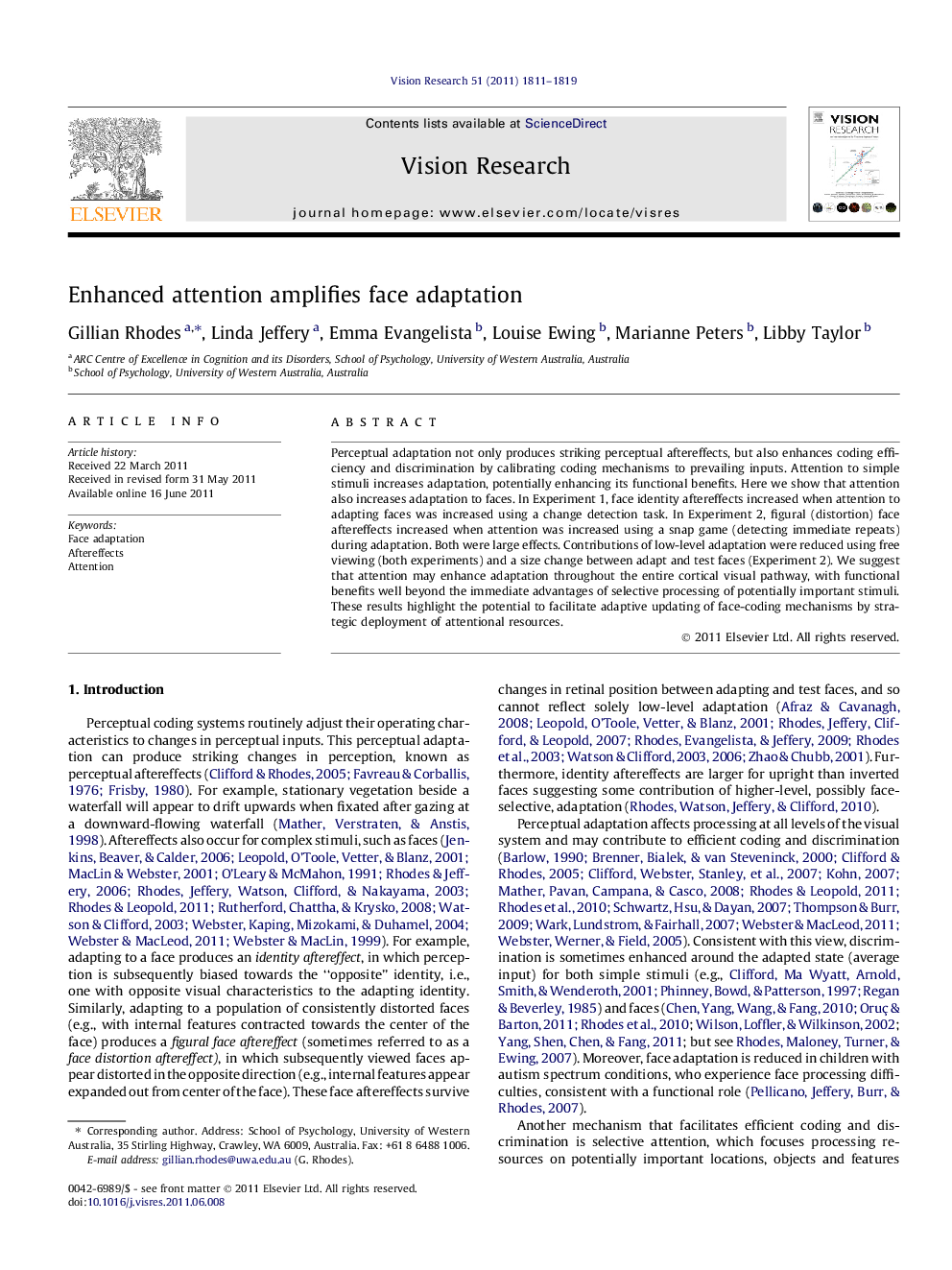| Article ID | Journal | Published Year | Pages | File Type |
|---|---|---|---|---|
| 4034097 | Vision Research | 2011 | 9 Pages |
Perceptual adaptation not only produces striking perceptual aftereffects, but also enhances coding efficiency and discrimination by calibrating coding mechanisms to prevailing inputs. Attention to simple stimuli increases adaptation, potentially enhancing its functional benefits. Here we show that attention also increases adaptation to faces. In Experiment 1, face identity aftereffects increased when attention to adapting faces was increased using a change detection task. In Experiment 2, figural (distortion) face aftereffects increased when attention was increased using a snap game (detecting immediate repeats) during adaptation. Both were large effects. Contributions of low-level adaptation were reduced using free viewing (both experiments) and a size change between adapt and test faces (Experiment 2). We suggest that attention may enhance adaptation throughout the entire cortical visual pathway, with functional benefits well beyond the immediate advantages of selective processing of potentially important stimuli. These results highlight the potential to facilitate adaptive updating of face-coding mechanisms by strategic deployment of attentional resources.
► Increased attention amplifies face aftereffects. ► Parallels findings for simpler stimuli, processed earlier in visual pathway. ► Suggests similar effects of attentional modulation throughout visual pathway. ► Suggests attention promotes adaptive calibration of coding mechanisms to prevailing inputs. ► Face norms will be biased towards attended faces.
